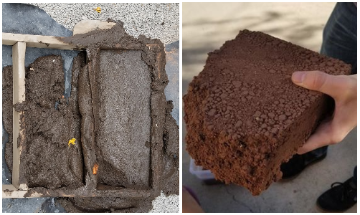Finally, one of the most effective ways of ensuring the appropriateness of your design solution is through exploratory visits to your target community in the beginning or middle of your senior design project. Whether your target community be a group of bikers in San Jose or rice farmers in Malaysia, being able to interact directly with the customer and gather data on the actual environment that your project is designed to serve gives you and your teammates a more immersive experience in engineering product design. Overall, travel gives your team greater opportunities to allow your customer to exercise their rights to voice their feedback on the design, as they may be able to better understand and visualize your conceptual design in person.
Why should my team look to travel during the senior design process?
While not every team may be travelling out of state or abroad to visit their target community, in-person interaction with the potential customers and the community environment greatly enhances the human rights aspect of design. Working with the potential customers in your target community that would benefit from your design solution allows for your design team to not only validate the intended outcomes of implementing your project, but also to welcome valuable feedback on how the design is actually evaluated by the customer. This provides opportunities to iterate upon the design and achieve a closer customer/product fit when your final prototype is deployed.
Travel to the target community aims to gather further consumer data to improve the robustness and effectiveness of your design solution. Your efforts to better understand the customer needs, wants, and concerns will largely be done through on-site fieldwork, either by testing your prototype or assessing how your prototype can be made more robust for the community.
Because time during the senior design process is extremely valuable, it is important to plan as a team not only when to travel, but also the purpose is of your exploratory visit. To better define the goals of your visit, it is helpful to consider the following.
- Access to human/technological amenities (standard of living):
- Does the community have access to an electrical grid? Plumbing? Internet connectivity? How does the presence or lack of these amenities make the community environment difficult or impossible to recreate at SCU for testing?
- Native resources/ecosystem/topography:
- What native resources or general environments are present in your community that are not present or replicable at SCU? How would testing on-site offer more accurate data collection for your project?
- Language/cultural/social/educational etc. barriers:
- Does your team need a translator? If so, how can your team benefit from using a translator to directly acquire data from interviewing community members?
- Testing and on-site data collection:
- What are tests that you and your team cannot conduct here at SCU, or tests that would be inaccurate unless done on-site? How is the data from these tests going to improve the robustness of your final prototype?
- What tests require active participation by the members of the target community? Why can’t these tests be replicated at SCU?
- Professionalism, Voice of Customer, and Value Proposition Design:
- How will an exploratory trip greater enhance customer confidence in your product? Is it possible to demo a prototype or present a conceptual design on-site for your customer?
- What data on customer needs, wants, and concerns regarding your design cannot be collected remotely, and would require direct interaction with the community? What tests are associated with collecting this data?
Personal Link:
While this may not be the case for all senior design projects, travel to Nicaragua was absolutely necessary for our project. Firstly, our team needed to conduct research on the soils used in mixing clay and forming the clay bricks in the community. We learned very early on that clay is not the same everywhere in the world-- and that while we had a reasonable estimate of the type of clay used in Nicaragua, our tests in California were not going to be as robust for design as interacting with the community’s clay. Travel to Nicaragua also allowed our team to make better sense of their clay mixing processes. We previously relied on information collected through phone calls and videos to understand what procedures they used to mix the clay. It wasn’t until I traveled there, however, that my colleague and I were able to document the process step-by-step. Our tests on the local soils also determined that the clay that we mixed back at SCU looked very similar, but did not feel the same at all.

Figure 8: Clay found in Nicaragua compared to the clay mixed at Santa Clara University. It is worth noting that the Nicaraguan clay is much darker and wetter because the community uses a mixture of several local soils, and a significantly higher amount of water.
Another piece of information we would not have been able to have if we hadn’t traveled was that while our primary customer, the owner of the social entrepreneurship, was confident in our design, his employees had significant concerns regarding its implementation. During one of our workdays, my colleague and I were approached by a worker who wanted to know what our device would do. Upon hearing that our device would better form the clay bricks through compression, he said that he felt concerned that he may lose his job if the device were to render his work obsolete. This was an ethical dimension of our design that our team had not considered before, and further influenced our design decisions to require multiple people to operate our device.
